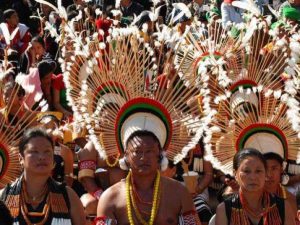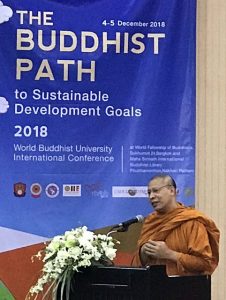Pharātarā Caitya is a historical site where the Buddha visited more than two-and-a-half millennia ago. Pharātarā Caitya is located in a prominent village named Cakraśālā, four kilometers south of Patiya Subdistrict in Chattogram Division, present-day Bangladesh. This area was then a part of the historical region know as Boṅgabhūmi, long before modern-day India and Bangladesh were founded.
According to the local Buddhists of Chattogram, the Buddha and his disciples rested at Cakraśālā for a few days while on their way to Arakan (present-day Myanmar). Here, the Buddha regularly practiced walking meditation (Skt: caṅkrama) and delivered his teachings for a week.
The name Cakraśālā is probably derived from the Sanskrit term “caṅkrama,” which means “walking meditation,” and reminds us of what the Buddha and his disciples did in this ancient region. In addition to practicing walking meditation in Cakraśālā, the Blessed One also turned the wheel of Dharma (Skt: dharmachakra) or taught the Dharma. The Bengali account suggests that the name Cakraśālā is derived from the Sanskrit term dharmachakra. To honor the Buddha and his imprints in Cakraśālā, a local ruler built a monument, Pharātarā Caitya, which is revered by devotees and followers to this day. (Shimul 2012, 155)

According to Bengali legend, 1,200 years after the historical Buddha’s parinirvana, there lived a Buddhist scholar called Dīpaṃkara Sthabira, who was probably born in the southern part of present-day Chattogram Division. Dīpaṃkara Sthabira was the disciple of an eminent Buddhist scholar and a former abbot of Nālandā University, Ācārya Śīlabhadra (529–645 CE). Ācārya Śīlabhadra was born in the village of Chandinar Kailaiyen, in Comilla District of modern Bangladesh.
Inspired by Ācārya Śīlabhadra and observing the fond memory of the Buddha’s historical visit, Dīpaṃkara Sthabira brought a rare stone displaying the historical Buddha’s 32 physical marks to Cakraśālā. This stone with the 32 marks of the Buddha was referred to as the “Bud’dhacakra” due to its doctrinal and spiritual significance. Historians also believe that the name Cakraśālā may have been derived from the term “Bud’dhacakra (Bud’dha + cakra).”


A brief account of Cakraśālā is illustrated in Dharmatilōka Mahāsthabira’s work Sadharma Ratnākara, published in 1936 by Yangoon Mission Press. Mahāsthabira writes that a wise Buddhist monk named Candrajyōti Bhikkhu visited Cakraśālā in the 15th century. Candrajyōti Bhikkhu was invited by a wealthy local merchant, Hā’idamajā, who was born in Cakraśālā. At that time, the range of the southern part of Chattogram was under Arakan territory and divided into four major cities: Ramu, Chakaria, Cakraśālā, and Deyang. Cakraśālā was one of the four capitals of the Arakan territory of Southern Chattogram. However, while Candrajyōti Bhikkhu visited in Cakraśālā, he offered Buddhist teachings for three consecutive days.
Candrajyōti Bhikkhu had a “cakrasan,” a painting of the wheel of Dharma, which he brought from Myanmar. After listening to the teachings from Candrajyōti Bhikkhu, Hā’idamajā became so inspired that he requested to acquire this Dharma wheel art. Candrajyōti Bhikkhu did not disappoint the merchant and offered the cakrasan to him. In honoring Candrajyōti Bhikkhu’s generosity, Hā’idamajā erected a monument (cetiya) in Cakraśālā, subsequently known as “Farātāra Caitya of Cakraśālā.” However, since the merchant Hā’idamajā was born in Cakraśālā, the place is also known as “Hā’idgaon”. (Dharmatilōka Mahāsthabira 1936, 309–14)

From ancient times until now, Pharātarā Caitya in Cakraśālā is respected and honored by Buddhists across Bengal. Buddhists in Bangladesh have continued to commemorate the Buddha’s holy presence with a special festival called the auspicious “Chaitra Songkrāntī” on the last day of the Bengali calendar. Bengali Buddhists believe that Chaitra Songkrāntī is a sacred occasion where people say can say goodbye to the outgoing year and welcome the Bengali New Year’s Eve. Aside from prayers and rituals, people can gather in a sacred Buddhist location with family members and friends while also inviting Buddhist monastics. Pharātarā Caitya is one of those sacred sites at which Buddhist communities gather during Chaitra Songkrāntī.
Although Buddhism in Bangladesh has not enjoyed a golden age since independence, and it is extremely difficult to protect the historical sites that remain, local Buddhists still keep some of their old traditions alive and take care of their holy places, such as Pharātarā Caitya, with pride, honor, and respect for their glorious past.
References
Barua, Shimul. 2012. Bānlāra Baud’dha: Itihāsa-Aitihya O Sanskr̥ti. Chattogram: Anōmā Sanskr̥ti Gōsṭī.
Mahāsthabira, Dharmatilōka. 1936. Sadharma Ratnākara. Yangon: Buddhist Mission Press.
Related features from BDG
Karmayōgī Kṛpāśaraṇa Mahāthērō (1865–1927): The Forgotten Monk Who Built Buddhism in Modern India and Bangladesh
The History and Heritage of the Buddhist Diffusion in Boṅgabhūmi
From Vajrayoginī to the Land of Snow: The Legacy of Atīśa Dīpaṃkaraśrījñāna (982–1054)












